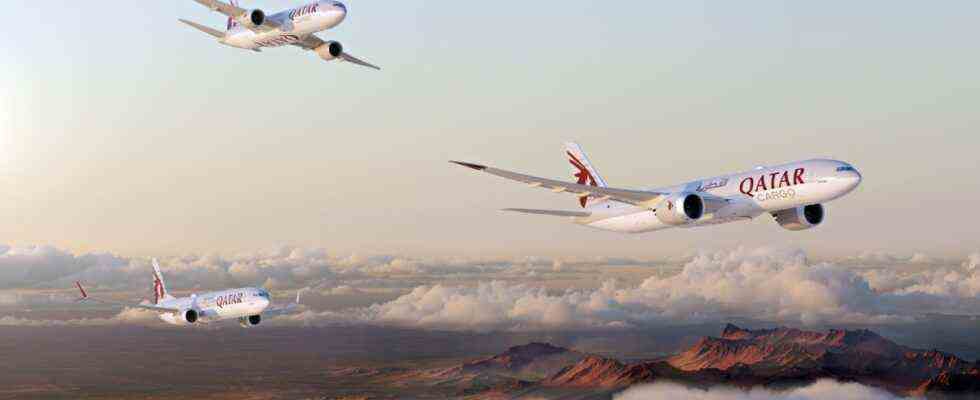The setting was more than appropriate for the occasion. Qatar Airways CEO Akbar Al Baker and Boeing CEO David Calhoun met at the White House to sign the contract. After all, the Emir of Qatar is on a state visit to the USA, and on these occasions the governments involved are known to like to provide the pictorial framework for agreements that promise growth and prosperity.
The reason: Al Baker ordered 34 machines of the new freighter model from Boeing as a launch customer 777-8Fwhich Boeing will deliver for the first time in 2027 and the aging ones in the portfolio 747 will replace. The fact that Qatar Airways would officially start the program had been an open secret for months and was nevertheless very welcome good news for Boeing, because the group’s industrial crisis is far from over. For Boeing, the signing was so gratifying because Qatar Airways was concerned about quality defects in the long-haul jet due to the bitter dispute with Airbus A350, now apparently turned away from the European manufacturer for a long time. The airline also announced an order for 50 models of the type 737-10 who received an order canceled by Airbus A321neo should replace.
The launch of the new Boeing model makes it clear how great the hopes are that the industry as a whole is placing in freight. The International Air Transport Association (IATA) has just published the traffic figures for 2021. Accordingly, passenger traffic demand was still 58 percent below the level of 2019, a catastrophic situation for any industry. The situation in freight is completely different: demand in 2021 was 6.9 percent higher than two years earlier. The capacity, however, was still ten percent below the pre-crisis level. As a result, prices in December 2021 had risen by half compared to 2019.
Freight is currently an extremely lucrative business and many observers assume that the boom will continue for a long time. Many supply chains are further disrupted by the pandemic, so more components for key industries are currently being transported by air. The growth in e-commerce is also helping enormously. In addition, international passenger traffic is still just 25 percent of what it used to be. Normally, half of all air freight is carried on board passenger planes, but when they are used much less frequently, all-cargo jets have to take over.
For the two major aircraft manufacturers, the enormous demand initially means billions in investments. Airbus in particular had neglected the cargo business for decades. The only last model offered, the A330F, was a flop. At the end of 2021, Airbus decided to build a freighter based on the long-haul jet A350 to develop – the machine so far want to buy Singapore Airlines, Air France-KLM, Air Lease Corporation and the shipping company CMA. The first should be in 2025 A350-Freighters to be delivered.
The aviation authorities are taking a closer look at Boeing after the crash of the two “737-MAX”.
But that was not the only reason why Boeing had to act urgently. The International Civil Aviation Organization (ICAO), a sub-organization of the United Nations, decided on new emission standards in 2017. Accordingly, all current cargo aircraft from the leading manufacturer in the segment can no longer be built from 2027. At the jumbo jet 747 the problem will take care of itself – after more than 40 years, production will stop in October 2022 anyway. With the much smaller one 767 Boeing still hopes for an extension, but this is unlikely. In the 777which in size and load volume to the 747 almost comes close, Boeing has now drawn the consequences.
Around five years of development time remain for the model, which is not lavish. Almost lost in the joy of the Qatar Airways order is that Boeing is therefore one of the two passenger versions of the 777X postponed by several years to at least 2028. At the same time, the development work for the two models cannot be carried out. the 777-9 is to be officially delivered at the end of 2023, including to the first customer Lufthansa, four years later the cargo version, then the smaller one 777-8. But even the current schedule for the first passenger variant is still not confirmed after years of delays. The American Federal Aviation Administration (FAA) and the European Union Aviation Safety Agency (EASA) look at every new Boeing project after the disaster surrounding the two 737-MAX-Crashes now in detail.
The current production continues to cause concern: The ramp-up at the 737 succeeds more slowly than planned. More than 100 long-haul jets of the type 787 stand on the heap and wait for rework. Deliveries are not expected to resume until the second quarter.

